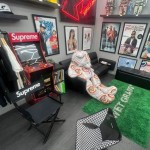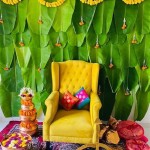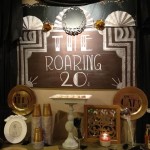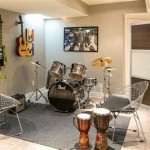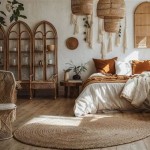Grey Dining Room Decor Ideas: A Comprehensive Guide
Grey, a color often associated with neutrality and sophistication, has emerged as a popular choice for interior design, particularly in dining rooms. Its versatility allows it to complement a variety of styles, from minimalist and modern to traditional and rustic. The following guide provides a comprehensive overview of grey dining room decor ideas, exploring various shades, complementary colors, and design elements.
Understanding the Nuances of Grey
Grey is not a monolithic color; it exists on a spectrum, ranging from near-white to almost black. Each shade of grey evokes a different feeling and interacts uniquely with light and other colors. Light greys, such as silver or dove grey, create a bright and airy atmosphere, making them ideal for smaller dining rooms or spaces with limited natural light. These lighter shades can also serve as a neutral backdrop for bolder accent colors.
Mid-tone greys, like charcoal or slate grey, offer a more grounded and sophisticated aesthetic. They can add depth and visual interest to a dining room without being overpowering. Mid-tone greys work well with both warm and cool accent colors, providing flexibility in design choices.
Dark greys, such as graphite or iron grey, are dramatic and luxurious. They create a sense of intimacy and formality, making them suitable for larger dining rooms or spaces designed for entertaining. Dark greys require careful consideration of lighting, as they can absorb light and make a room feel smaller if not properly illuminated.
Beyond the lightness or darkness of the grey, there are also variations in undertones. Some greys have warm undertones, leaning towards beige or taupe, while others have cool undertones, tending towards blue or green. Identifying the undertone of the chosen grey is crucial for selecting complementary colors that harmonize with the space.
Complementary Color Palettes for Grey Dining Rooms
The success of a grey dining room relies heavily on the careful selection of complementary colors. Grey, by its neutral nature, provides a versatile canvas for a wide range of color combinations. The choice of complementary colors should depend on the desired mood and style of the dining room.
For a classic and elegant look, pair grey with white or ivory. This combination creates a timeless and sophisticated atmosphere. Adding touches of metallic accents, such as silver or gold, can further enhance the elegance of the space. Consider using white or ivory for the trim, ceiling, and architectural details, while incorporating grey into the walls, furniture, and textiles.
To create a warm and inviting dining room, combine grey with natural wood tones. The warmth of the wood balances the coolness of the grey, creating a harmonious and balanced aesthetic. Consider using wooden dining tables, chairs, or flooring to introduce natural warmth into the space. Accents of warm colors, such as terracotta or mustard yellow, can further enhance the cozy atmosphere.
For a modern and minimalist dining room, combine grey with black and white. This combination creates a high-contrast and sophisticated look. Consider using black accents in the lighting fixtures, artwork, and furniture. Introduce geometric patterns and clean lines to reinforce the modern aesthetic.
To add a pop of color and personality, pair grey with vibrant accent colors. Jewel tones, such as emerald green, sapphire blue, or ruby red, can create a dramatic and luxurious effect. Pastel colors, such as blush pink, mint green, or lavender, can create a soft and romantic atmosphere. Consider using these accent colors in the artwork, cushions, curtains, or tabletop accessories.
Another option is to use analogous colors to create a cohesive and harmonious space. For example, if the chosen grey has blue undertones, consider incorporating other shades of blue, such as teal or navy, into the decor. This creates a subtle and sophisticated color palette.
Key Design Elements in a Grey Dining Room
In addition to color, several other design elements contribute to the overall aesthetic of a grey dining room. These elements include furniture, lighting, flooring, and accessories.
The dining table is the focal point of the room, so its style and material should be carefully considered. A wooden dining table adds warmth and texture to a grey dining room, while a glass or metal dining table creates a more modern and minimalist look. The size and shape of the dining table should be appropriate for the size of the room and the number of people who will typically be dining there.
The dining chairs should complement the style of the dining table and provide comfortable seating. Upholstered dining chairs add a touch of luxury and comfort, while wooden dining chairs offer a more rustic and informal feel. Consider using different colors or styles of dining chairs to create visual interest.
Lighting is crucial in a grey dining room, as it can affect the perceived color and mood of the space. A well-lit dining room should have a combination of ambient, task, and accent lighting. A chandelier or pendant light above the dining table provides ambient lighting, while table lamps or sconces can provide task lighting for reading or working. Accent lighting can be used to highlight artwork or architectural features.
Flooring can significantly impact the overall aesthetic of a grey dining room. Hardwood floors add warmth and texture, while tile or stone floors create a more formal and sophisticated look. Consider using an area rug to define the dining area and add a touch of comfort and style.
Accessories play a vital role in personalizing a grey dining room. Artwork, mirrors, plants, and decorative objects can add color, texture, and personality to the space. Choose accessories that complement the overall style and color palette of the room. Consider using a gallery wall to display artwork or photographs, or adding a large mirror to reflect light and make the room feel larger. Plants can add a touch of nature and freshness to the space, while decorative objects can add visual interest and personality.
Textiles, such as curtains, tablecloths, and napkins, can also contribute to the overall aesthetic of a grey dining room. Choose textiles that complement the color palette and style of the room. Consider using textured fabrics, such as linen or velvet, to add depth and visual interest. Layering textiles can also add warmth and comfort to the space.
Ultimately, the key to creating a successful grey dining room is to carefully consider the nuances of grey, select complementary colors, and incorporate key design elements that reflect personal style and preferences. With careful planning and execution, a grey dining room can be a stylish, sophisticated, and inviting space for dining and entertaining.

25 Elegant And Exquisite Gray Dining Room Ideas Decoración De Unas Decoracion Interiores Comedor

10 Unique Grey Dining Room Ideas Furniturebox

10 Unique Grey Dining Room Ideas Furniturebox

25 Elegant And Exquisite Gray Dining Room Ideas Decoist

520napl05 Elegant Dining Room Grey Design

Dark Gray Dining Room Shelves Design Ideas

25 Elegant And Exquisite Gray Dining Room Ideas Decoist

16 Great Gray Dining Room Decor Ideas Rugs Direct

50 Gray Dining Room Ideas Photos

57 Beautiful Neutral Dining Room Designs Digsdigs
Related Posts
